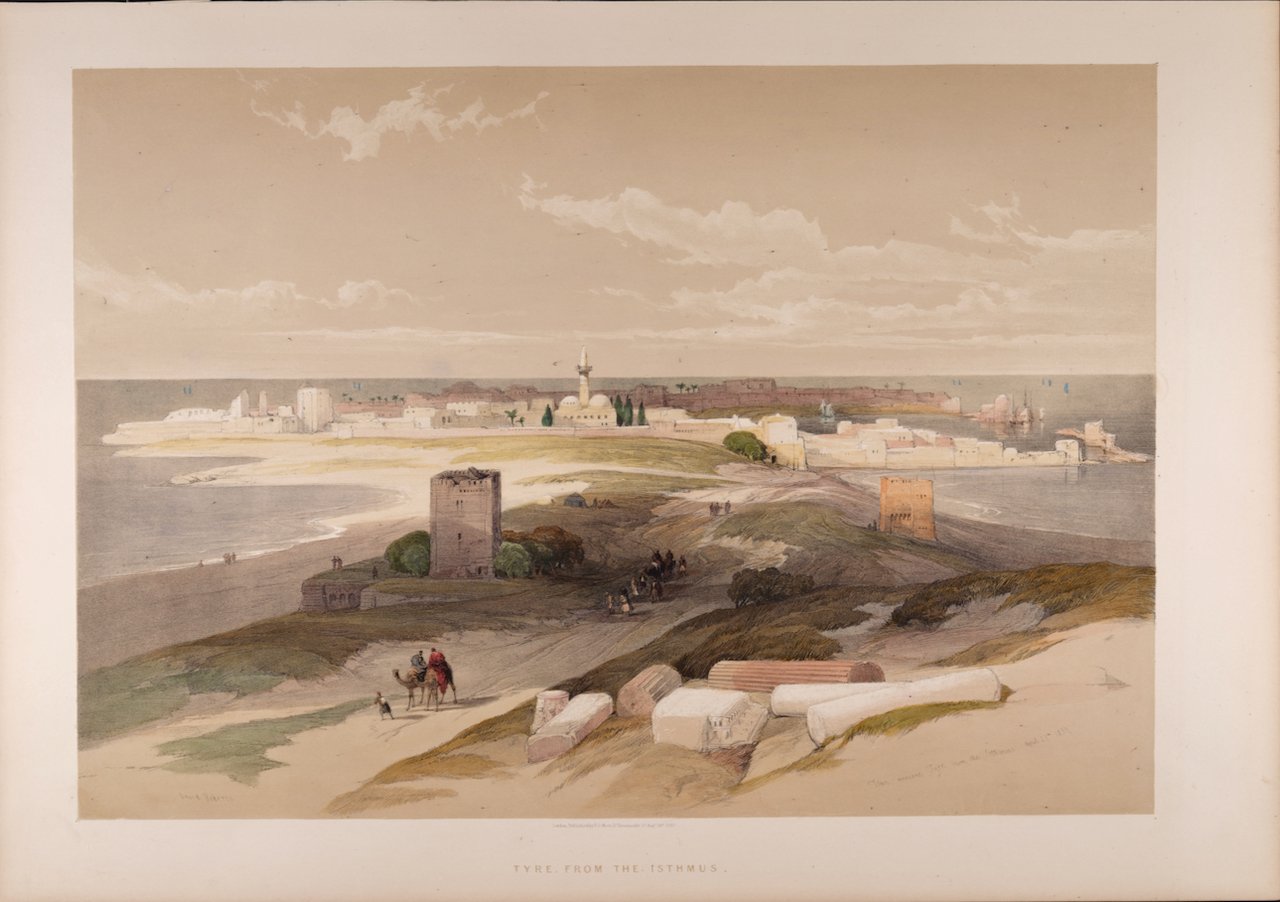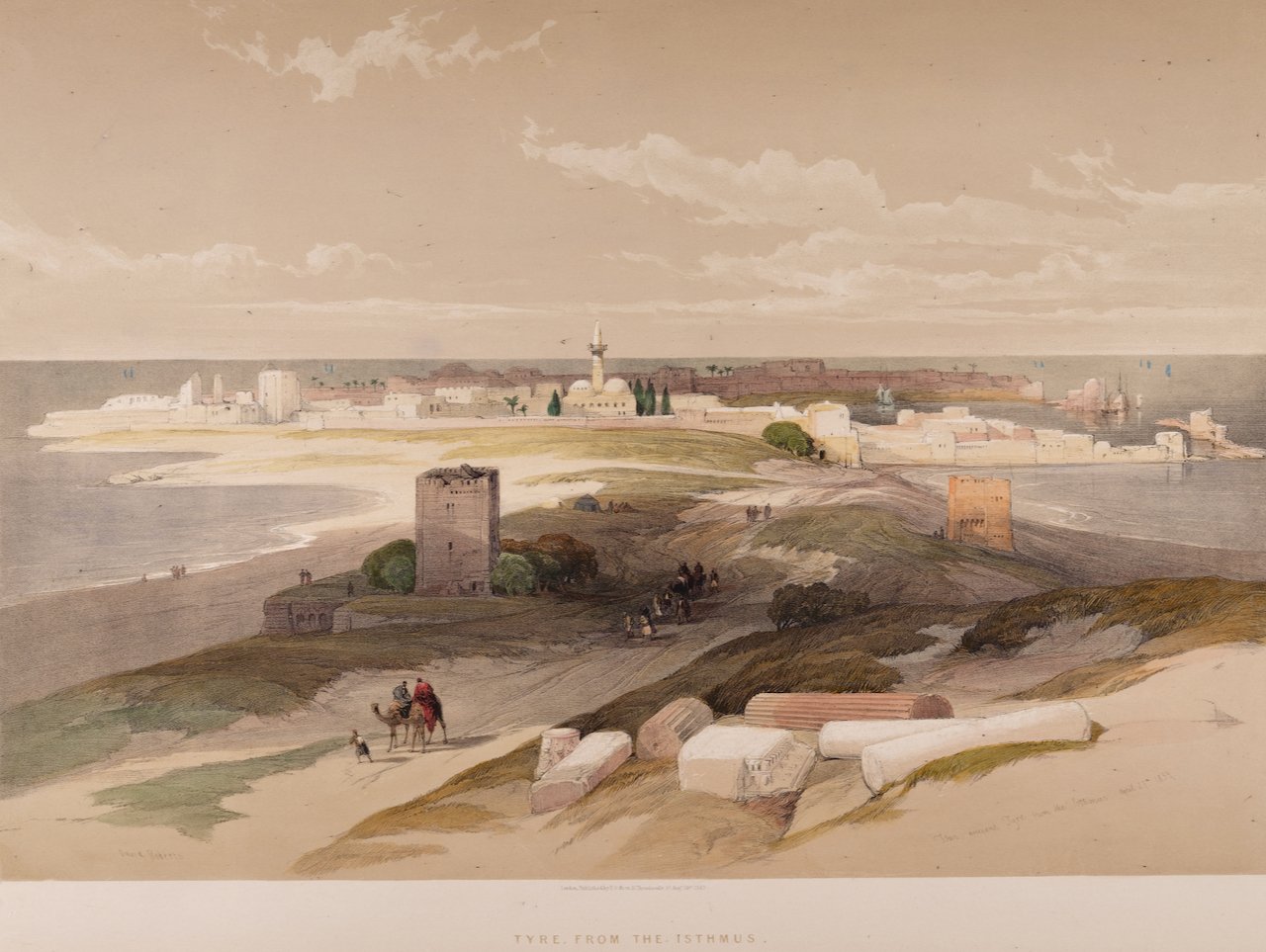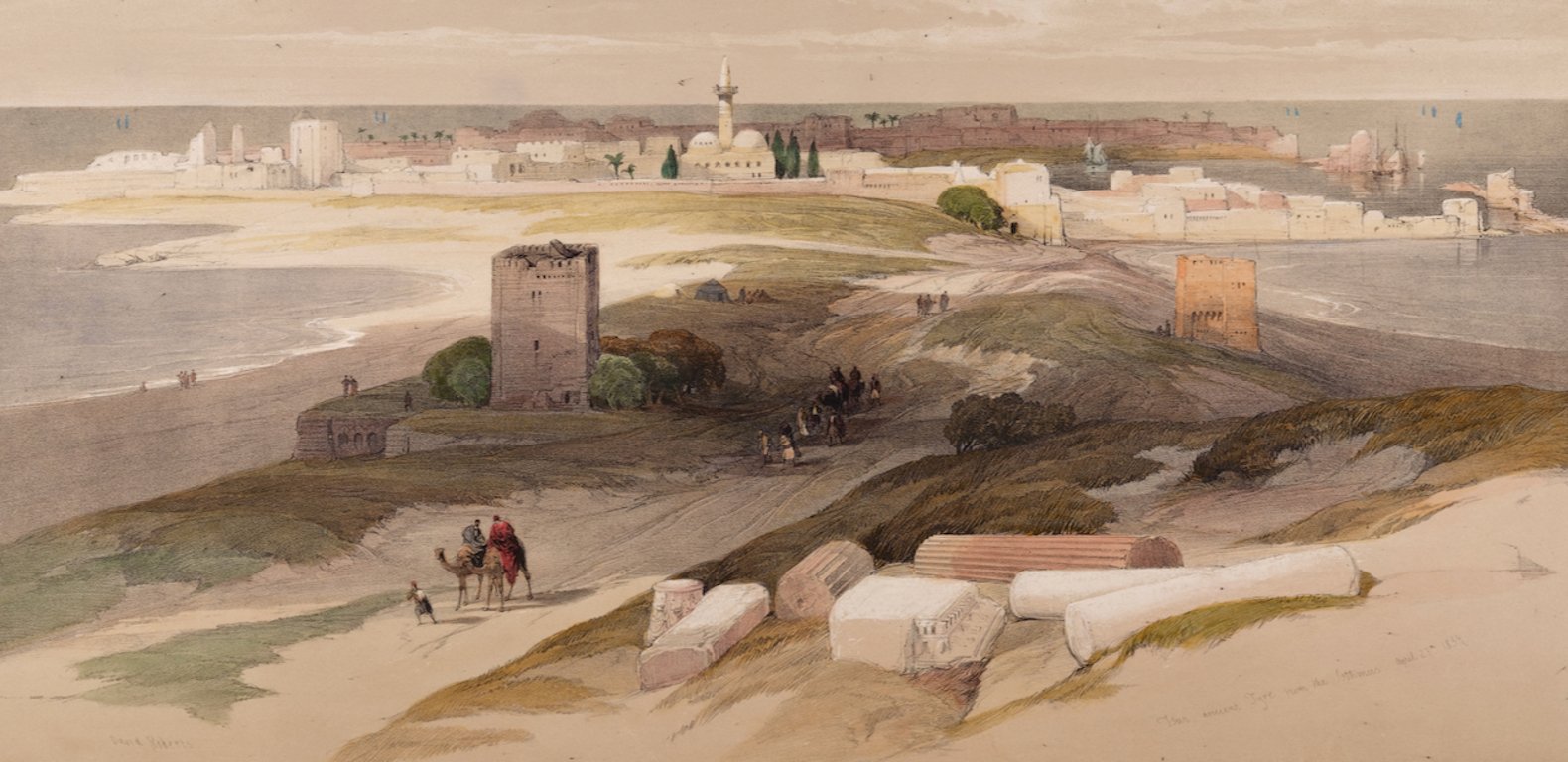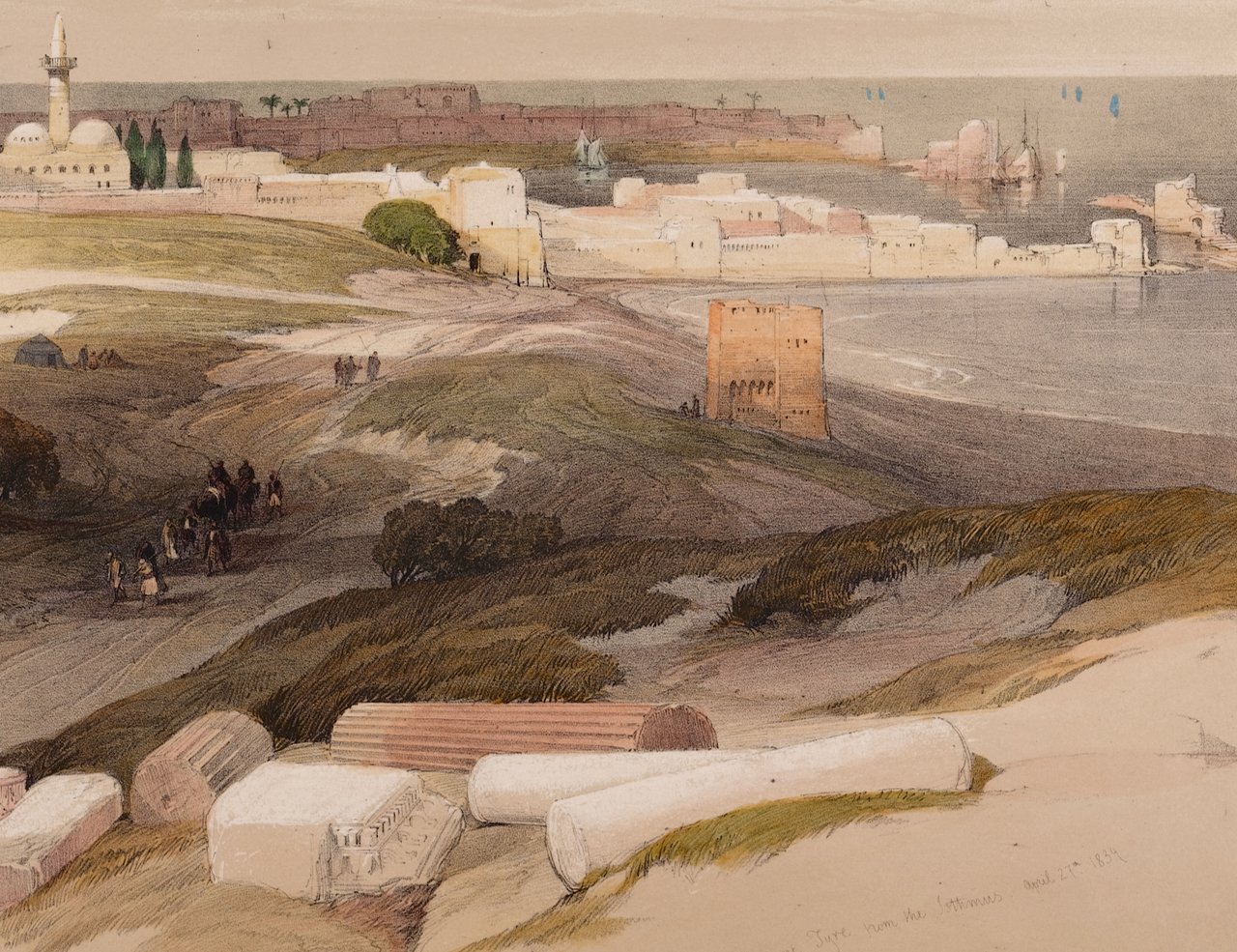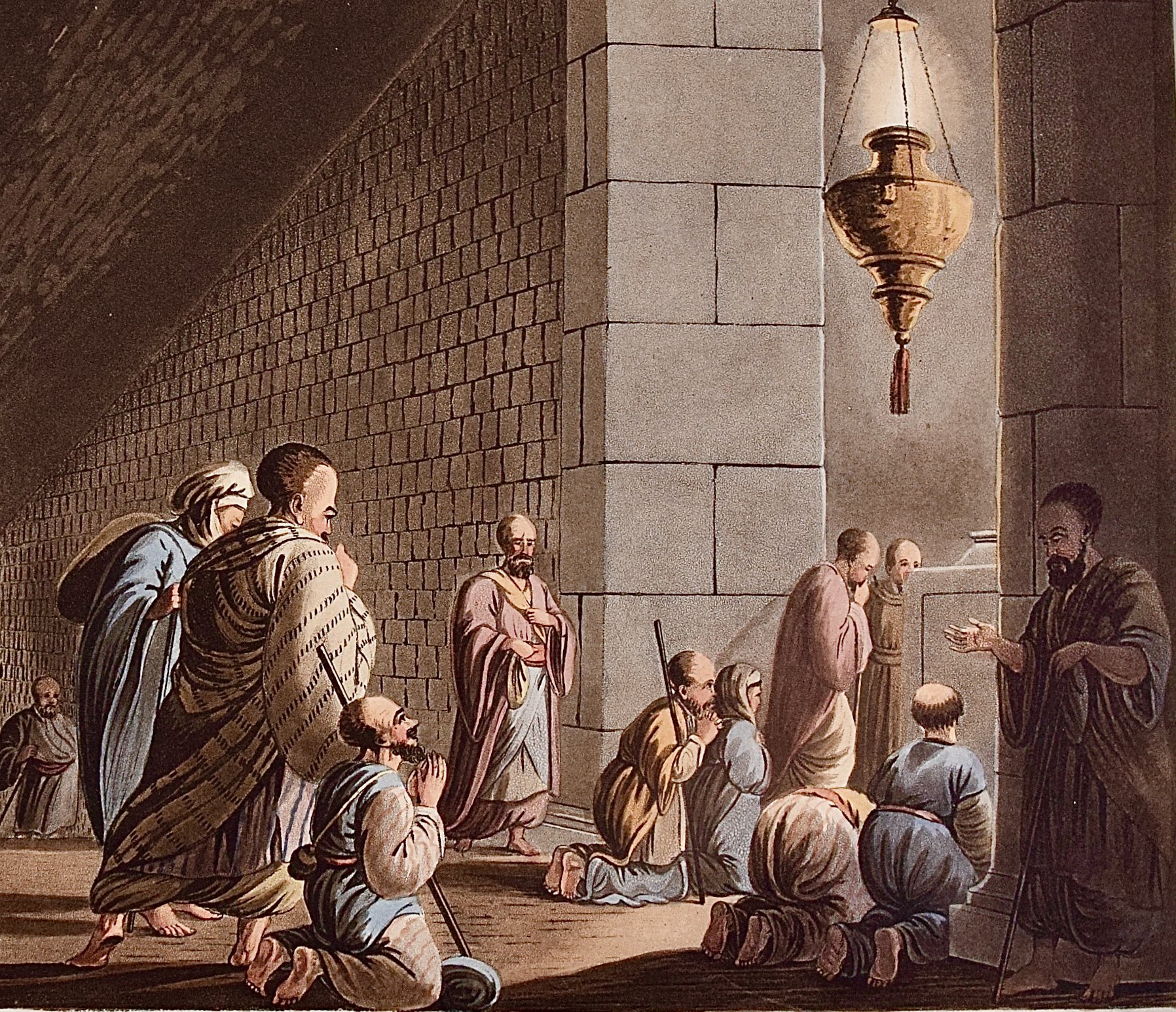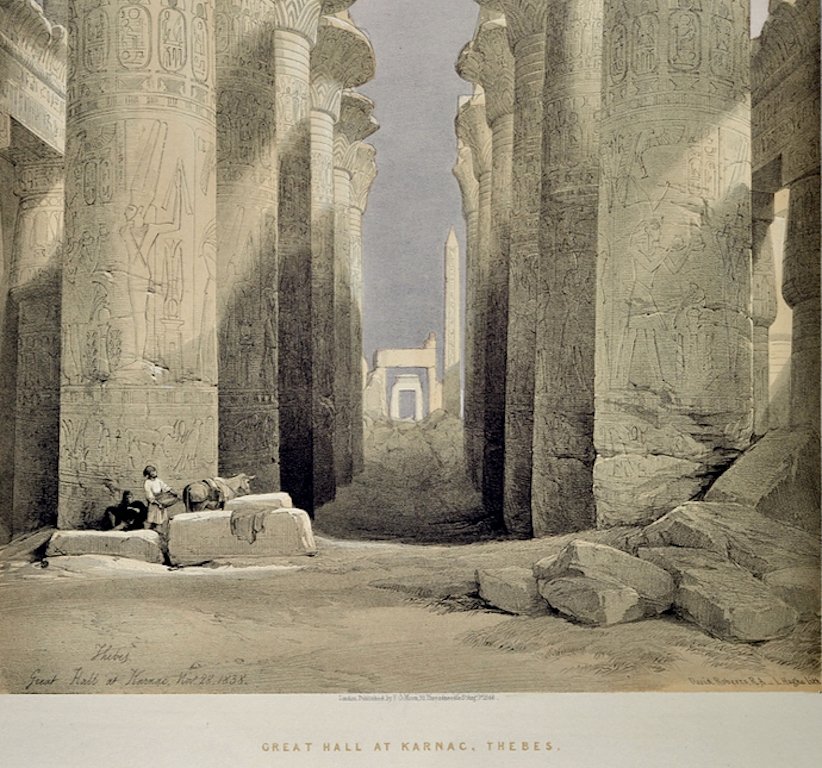The print depicts a view of Tyre, on the Mediterranean coast of southwestern Lebanon, located 12 miles north of the modern border with Israel and 25 miles south of Sidon. It was a major Phoenician seaport from about 2000 BCE through the Roman period.
The lithograph is signed in the lower left and the title and date of Roberts' tour of the area, April 27, 1839, is in the lower right. These are reportedly in Roberts' own handwritten script, as it appeared on the original sketch. This striking hand-colored lithograph is printed on wove paper with wide margins. The sheet measures 16.88" high and 23.88" wide. There are a few tiny spots, but the print is otherwise in very good condition.
The drawings and watercolors from Roberts' tour of the Holy Land and Egypt were collated together into folios and released over a seven year period by the publisher F.G. Moon from 20 Threadneedle Street London. Louis Haghe (the Belgian engraver and friend of Roberts) worked on all of the lithographs for this series.
David Roberts (1796-1864) was born outside of Edinburgh, Scotland. At age 10 he became a house painter’s apprentice. He continued painting houses and eventually theater scenes in Edinburgh and then in London. His friend, J. M. W. Turner, recognized his artistic talent and encouraged him to become a full-time artist.
In 1839 Roberts traveled to Egypt and then in 1840, through the Holy Land, concluding in Jerusalem. Upon his return to England, F. G. Moon agreed to publish lithographs created by Louis Haghe from Robert’s sketches and watercolors. This publication was highly acclaimed and very popular for its esthetic quality, its historical and topographical accuracy, and Robert’s dramatic depiction of his scenes. Queen Victoria and Charles Dickens were among the subscribers who collected his works. Roberts' and Haghe’s duotone lithographs, often colored, remain extremely sought-after today and have been rising steadily in value.

